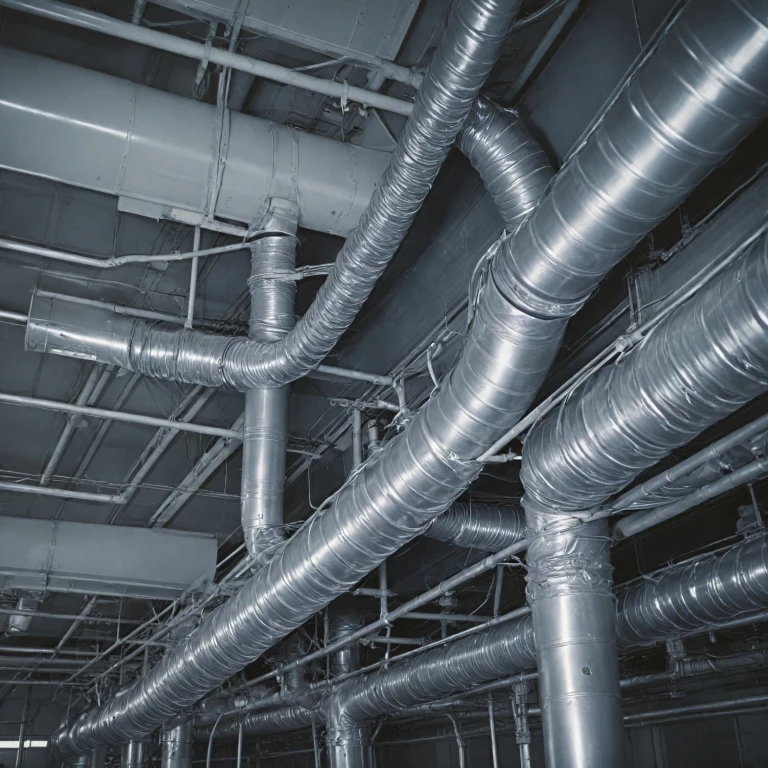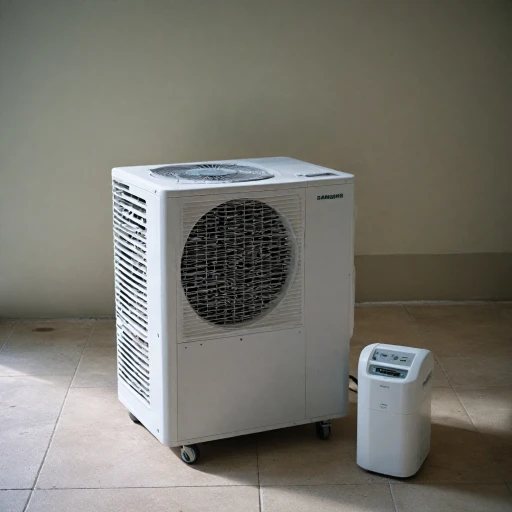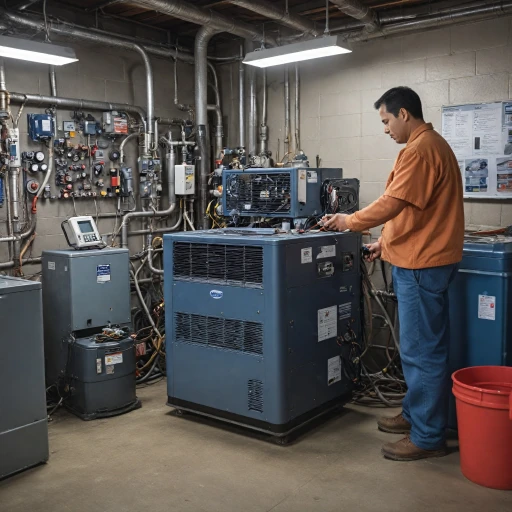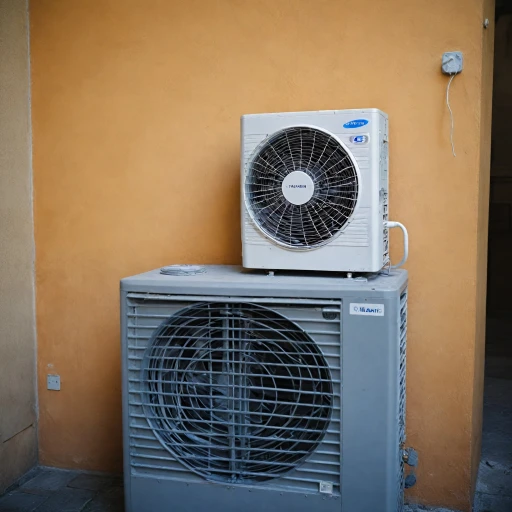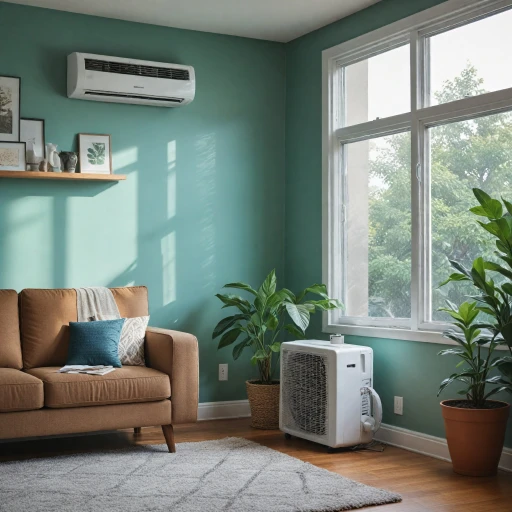
The Role of Flexible Ducting in HVAC Systems
The Importance and Functionality of Flex Ducting in HVAC Systems
When it comes to residential HVAC systems, ductwork plays an instrumental role in efficiently distributing air throughout a space. Among the various options, flexible ducting stands out due to its versatility and adaptability. Used not only in large scale systems but also in portable air conditioners, flex ducting offers tailored solutions that suit diverse applications. Flexible ducts are constructed from bendable materials allowing them to navigate tight corners and confined spaces more easily than rigid ducts. This adaptability makes them particularly advantageous for residential installations, where saving space and optimizing layout are priority concerns. Additionally, flex ducts can often be cut to size, enabling more precise installation without extensive structural modifications. Moreover, flexible ducting offers antimicrobial properties, which is crucial in maintaining indoor air quality. Products made from materials with these properties help inhibit the growth of mold and bacteria inside the ducts, thus ensuring cleaner air flows throughout the HVAC system. Further contributing to their functionality, some flexible ducts are insulated to enhance energy efficiency. Insulated products help maintain the desired temperature of the air being transported, reducing thermal loss and potentially leading to energy savings over time. For those conscious about the environment, selecting green products with these traits can align with sustainable practices and energy conservation. In the realm of HVAC installation, flexible ducting often comes with recommended installation guides specifying duct size and the purchase of ducts by the feet. It is essential to maximize the benefits of flexible ducting by following these guidelines, alongside ensuring a proper fit within the system’s layout. Consider exploring flexible rectangular ductwork for expanded possibilities in portable air conditioners. Each option comes with its pros and cons, and making the right choice enhances overall efficacy and comfort.Benefits of Using Flexible Ducting
Why Flexible Ducting is a Preferred Choice
Flexible ducting has become an integral component in HVAC systems due to its ease of use and versatility. Unlike rigid duct systems, flexible ducts can be easily installed and maneuvered around obstacles, making them an excellent choice for a variety of residential HVAC applications. A standout advantage of using flexible ducting is its ability to maintain airflow efficiency, which is crucial for optimal system performance. With the right duct size and proper installation, air can be circulated effectively throughout the home, increasing comfort while potentially helping to save on energy costs. In terms of practicality, flexible duct products often come with insulating capabilities that help in maintaining temperature control. These flex ducts are generally lightweight and available in a variety of feet lengths and diameters, enabling customization for specific needs. Some even feature antimicrobial properties, which can contribute to improved indoor air quality by inhibiting the growth of bacteria and mold. Additionally, the market for flexible ducting is rich with options, from basic to insulated models. These products are often available at competitive prices, with frequent deals making them an affordable solution for both new installations and upgrades. The use of green and sustainable materials in production is an added bonus for environmentally conscious consumers. For a deeper dive into how flexible ducting adds value to HVAC systems, it's worth exploring product specifications and recommendations, especially for those looking to invest in smart and efficient HVAC solutions.Challenges in Using Flexible Ducting for Portable Air Conditioners
Understanding the Complexities of Flex Ducts in Portable Air Conditioners
When it comes to portable air conditioners, the challenges of utilising flexible ducting can be significant. While these ducts are designed to save space and simplify installation, they aren't always the perfect fit for every scenario. Portable air conditioners frequently demand specific adaptations in their duct installation. Given the relatively compact dimensions and the need for mobility of these units, selecting the right duct size and material becomes crucial. With various types of products available, from antimicrobial to insulated options, identifying the right flexible duct can be daunting. The installation process itself can present hurdles. Portable air conditioners often require flexible ducts that curve or bend to fit into tight spaces. However, the use of inflexible materials or incorrect sizing can impede airflow, reducing efficiency. Moreover, if the ducts are too long or exceed recommended installation guidelines, they might affect the air quality and cause unnecessary energy consumption. Moreover, pricing considerations also come into play when choosing flexible ducts for portable air conditioners. Price variations can significantly impact the decision-making process, with green products or those suited for residential hvac systems tending to be on the higher end of the spectrum. To tackle these challenges effectively, it's essential to be well-informed and vigilant during the selection and installation processes. Careful assessment of factors such as duct size, materials, and the specific needs of your system width can prevent potential pitfalls. For further reading on duct components and their roles in portable air conditioners, you may want to explore the comprehensive guide on the components of a portable air conditioner. In summary, while flexible ducting offers considerable advantages, its use in portable air conditioners comes with its own set of challenges that need to be carefully navigated.Installation Tips for Flexible Ducting
Practical Guidelines for Optimal System Set-Up
When installing flexible ducting for your portable air conditioner, certain tips can significantly enhance efficiency and performance. Understanding the specific requirements of your ducting systems is crucial for seamless integration into your residential HVAC environment.
Choosing the Right Duct Size: The first step is determining the appropriate duct size for your air conditioning unit. Flex ducts come in various sizes, and selecting the right one is essential for optimal airflow and system efficiency. Ensure that the duct size matches the specifications of your HVAC system to avoid unnecessary strain or reduced efficiency.
Installation Location: Consider the positioning of your ducts carefully. Ensure they are not obstructed and maintain a short, straight path to the outside vent, minimizing any bends or kinks. Ideal placement helps in achieving the best air circulation and maintains the unit's effectiveness.
Insulation and Protection: For those looking to save on energy costs, using insulated ducts is beneficial. These products help to maintain the air temperature as it moves through the ducting, preventing heat gain in the summer and heat loss in the winter. Antimicrobial coatings can also be a smart investment, providing enhanced indoor air quality by reducing the growth of mold and bacteria within the air passage.
Secure Connections: When attaching ducts to your portable air conditioner, use secure connections to prevent air leaks. This step not only maximizes airflow but also prevents energy loss. Consider using duct tape designed specifically for HVAC systems or duct ties to ensure tight seals.
Monitoring and Adjustments: After installation, it is advisable to periodically check your ducting system for any necessary adjustments. Seasonal changes or shifts in your home's layout might require modifications to ensure continued efficiency.
By adhering to these installation tips, users can optimize their cooling systems, ensuring they get the best deals on energy usage and air quality, while keeping their feet comfortable in any season.
Maintenance and Care for Flexible Ducting
Preserving the Efficiency of Flexible Ducts
Maintaining the efficient performance of your HVAC system involves more than just the initial setup. Regular maintenance and care for your flexible ducting are crucial to ensuring it performs optimally, maintains air quality, and extends its lifespan. Firstly, always inspect your ducts regularly for any signs of wear and tear. Due to their flexible nature, these ducts can develop issues such as tears or sags over time. Addressing these issues promptly can prevent bigger problems and save you money on costly repairs later. Duct tape or specialized duct sealant can be used for minor repairs. Another vital aspect of maintaining flexibility and functionality in your ducts is keeping them clean. Accumulation of dust and debris can clog the ducts, affecting both air quality and efficiency. Regular cleaning can include vacuuming the duct interiors and occasionally checking the filters, which should be replaced or cleaned as per the manufacturer's recommendations. Caring for your ducts extends to ensuring proper insulation. Insulated flexible ducts help maintain the desired temperature and improve energy efficiency, which can result in cost savings on monthly bills. It’s recommended to periodically check the condition of the insulation to ensure it's intact and offering effective temperature control. Additionally, manufacturers may offer antimicrobial coatings on their products to prevent the growth of mold and other harmful microbes. Choosing antimicrobial flexible ducts can play a part in maintaining a healthier indoor environment, along with proper maintenance. Lastly, stay informed about any advanced products and technological innovations in the field of HVAC. New materials, enhanced flex duct designs, and green technology could offer better performance and enhanced efficiency at competitive prices, keeping you ahead of the curve in residential HVAC solutions. For a deeper dive into types of ducts and their benefits, you might find it helpful to explore the benefits of different ductwork types. Exploring recommended installation practices for your specific duct size and HVAC setup can also help preserve system efficiency, ensuring the comfort of your residential environment.Innovations in Flexible Ducting Technology
Advancements in Flexible Ducting Materials
The evolution of flexible ducting in HVAC systems has seen significant advancements in materials used. Modern ducts are now often made with antimicrobial coatings, which help in reducing the growth of mold and bacteria, ensuring cleaner air circulation. This is particularly beneficial in residential HVAC settings where air quality is a priority.
Insulation and Energy Efficiency
Another innovation is the use of insulated flexible ducts. These ducts help in maintaining the temperature of the air as it travels through the system, reducing energy loss and helping homeowners save on energy bills. The insulation also aids in noise reduction, making these ducts a popular choice for residential HVAC installations.
Eco-Friendly and Sustainable Options
With a growing emphasis on sustainability, many manufacturers are now producing green ducting options. These products are made from recycled materials and are designed to be more environmentally friendly. This shift not only helps in reducing the carbon footprint but also appeals to eco-conscious consumers looking for sustainable HVAC solutions.
Improved Flexibility and Installation Ease
The latest flex duct designs offer enhanced flexibility, making them easier to install in tight spaces. This flexibility reduces the need for additional connectors and fittings, simplifying the installation process and potentially lowering the overall price of the project. For recommended installation practices, ensuring the correct duct size is crucial for optimal performance.
Innovative Design Features
Some of the newest designs in flexible ducting include features like a reinforced core for added durability and black outer layers that resist UV damage. These features extend the lifespan of the ducts, offering better value for money. Additionally, the use of flexible duct boxes can help in organizing and protecting the ducts during installation.
Market Trends and Deals
Keeping up with the latest news in flexible ducting technology can help consumers find the best deals and products that meet their needs. As the market continues to evolve, staying informed about new innovations and products can provide significant advantages in terms of both performance and cost-effectiveness.
